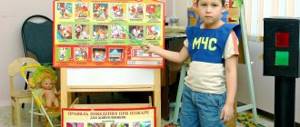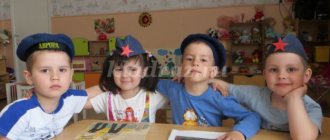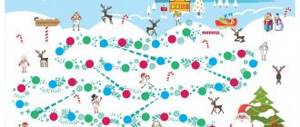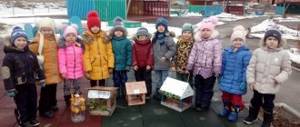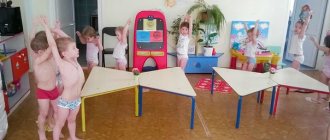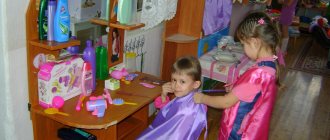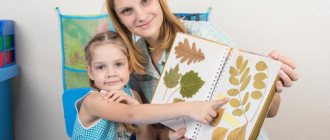What are the benefits for a child of having a vegetable garden outside the window?
By creating a miniature vegetable garden on the window, children receive new information. They learn how to care for crops and expand their vocabulary. Previously, terms such as planting, loosening, seeds and others were incomprehensible to them. And now the guys have a clear idea of all this.
Who would have thought, a vegetable garden on the window helps a child learn the basics of mathematics. Not everyone has the ability to think quickly. Visual material is easier to digest, any experienced teacher will confirm this.
You can come up with different addition and subtraction problems. For example: “we planted 6 bulbs, 4 of them managed to germinate and produce a green feather. The question is how many bulbs have not sprouted at the moment.”
These are not all the advantages of this project. Direct participation in planting plants develops a sense of responsibility in children. As they master new knowledge, they independently seek answers to their questions. Thereby enriching your inner world and expanding your horizons.
MAGAZINE Preschooler.RF
Innovative project on the topic: “Vegetable garden on the window” preparatory group for schoolPrepared and conducted by a teacher of the highest qualification category Kosheleva O.A. Volzhsky 2020 Municipal preschool educational institution “Kindergarten No. 37 “Yolochka” Volzhsky, Volgograd region
Project: long-term.
Type of project: educational, creative.
Duration: 2 months.
Project participants:
- children of the preparatory school group "Sudarushka" .
- educators
- parents.
Age of children: 6 – 7 years.
The goal of the project: the formation of children’s ecological ideas about vegetable crops and leguminous crops in the process of growing from seeds.
Project objectives:
Training tasks:
- Introduce the history of vegetables.
- Expand and systematize children’s knowledge about vegetable crops and leguminous crops: structure, benefits, care for them.
- Teach children to care for plants indoors.
- Learn to observe changes in the development and growth of plants.
- Deepen knowledge about the conditions necessary for seed growth (earth, light, heat, water).
- Learn to carry out individual assignments and collective tasks.
Developmental tasks:
- Develop children's cognitive and creative abilities in the process of joint research activities.
- To form in children the concept of the relationship between nature and people: people plant, grow and care for plants, plants grow, delight people with their beauty, and feed them with their fruits.
- To form an idea of growing plants from seeds.
- Develop the ability to negotiate with assistants. teacher about the distribution of work, a responsible attitude to the assigned task.
- To consolidate children's knowledge about the conditions necessary for plant growth; 6.Develop children's speech, activate vocabulary (root, plant, deepen, conditions).
- Explain the importance of work.
- Develop children's sense of community in a group and cooperation skills.
Educational tasks:
- Cultivate an interest in caring for plants; gain experience in attentive and caring attitude towards growing plants.
- Foster a caring attitude towards your work, and the work of adults and children.
- Cultivate a desire to achieve results, a sense of responsibility for participation in a common cause.
- Foster respectful relationships between children and adults.
Relevance of the problem:
Among the range of vegetable crops grown in our country, cucumbers, tomatoes, beans, peppers, eggplants, and beets occupy a special place. The wide distribution of these vegetable crops is explained, first of all, by the traditional dietary habits of the people and the high taste of the fruits, which are eaten both fresh and processed. The surest way to get an environmentally friendly product is to grow it yourself.
This work is relevant because growing plants from seeds and observing them is a very exciting and educational process. Observing all phases of plant development from seed germination to the appearance of the first flowers or fruits is the magic of nature in action. It takes a lot of time and patience before a full-fledged plant grows. This is how the topic of our research arose : “Where were vegetables born?”
Brief description of the project:
The project is designed for children of senior preschool age and is being implemented over two months. The project uses all teaching methods: verbal, visual, practical. The project provides long-term planning on the topic, lesson notes, a series of developed observations, gaming, as well as independent and creative activities of children, mini-projects.
Expected results:
- Formation of environmental knowledge in children of senior preschool age in the process of cognitive and research activities - growing plants from seeds.
- Development of cognitive and creative abilities.
- Children will learn to care for plants and become familiar with the conditions under which they are kept, and will learn to notice the beauty of the plant world.
- Children will develop knowledge about plant growth in indoor conditions.
Evaluation methods:
Experiments, observations, conversations.
Project implementation:
"Vegetable garden on the window"
In the preparatory school group "Sudarushka"
In the daily lives of children, teachers drew attention to the fact that children are not always willing to carry out assignments or be on duty in a natural area. Many children, when watering flowers, do not want to clean up the watering cans after themselves, and do not wipe the dust on the leaves of the flowers. To the teacher’s question, “Why don’t you finish what you started?” — they answered “We’ve already wiped it , “I don’t like taking care of flowers , “I can water it before tomorrow.”
To the teacher’s question: “Do we need plants, and do they bring benefits?”
Some children answered: That plants should grow outside. Another part of the children said that the plants are beautiful, but they are of little use.
The teachers suggested discussing this with the group. Next questions:
-What do we know about plants?
- What new can we learn?
-How can we gain new knowledge?
The children answered the first question independently, the second question was answered by the teachers’ leading questions, the third question was mainly suggested by the teachers, and the children supplemented them.
Project implementation stages
Stage 1: preparatory
- collection of information and materials on the topic;
- organization of subject-development environment
- development of a cycle of observations and classes;
- conversations;
Stage 2: implementation:
- implementation of long-term thematic planning activities (direct educational activities on the topic, a series of observations, experiments, creative activities, mini-projects).
Stage 3: final:
- exhibition of children's works
Forward planning:
Working with parents:
- Conversation with parents “Vegetable garden on the window” .
- Help parents in purchasing equipment and seeds for a garden on the window.
- A selection of poems and riddles about vegetables and fruits.
- Consultation for parents “In the garden or in the vegetable garden .
Artistically productive
Drawing on the topic: “We draw vegetables and fruits .
Modeling on the theme: “Vegetables” .
Application on the theme: “Vegetables on a plate”
Play activity
Outdoor games “Collect all the items” , “Collecting the harvest” , “Garden and vegetable garden”
Didactic games “Vegetables and fruits”, “Pave the path” , “The fourth odd one” , “Wonderful bag” , “What first, what then?” , "Taste it" .
Conversations with children:
“What does a plant need seeds for?” , “When vegetables can help, and when they can harm our health” , “Peas, lentils, soybeans are relatives” , “Vegetables”
Reading and learning poems, riddles, sayings, songs about vegetables and fruits with children (reading fiction). Fairy tale by Charles Perrault “Puss in Boots” .
Conclusion:
During the work on the project, children formed an ecological understanding of vegetable crops and leguminous crops.
While growing and caring for plants, the children observe which of them grow faster, compare the shape and color of the leaves, and determine the conditions necessary for the growth and development of plants.
In the process of childhood research, the child acquires specific cognitive skills: learns to observe, reason, plan work, learns to predict the result, experiment, compare, analyze, draw conclusions and generalizations, in a word, develops cognitive abilities.
It is important to know and choose the right seeds for sowing indoors. Use natural fertilizer. Choose the right time to sow seeds and take good care of them. We liked doing the research, so next year we want to grow other vegetable crops indoors.
Project outcome: During the project, children learned to establish the sequence of stages of plant development, linking their changing external characteristics with a certain period of development. Children have developed knowledge about the conditions under which a plant can be grown from a seed.
Expected result:
Participate in experiments and experiments.
Know and name the parts of peas, cucumbers, tomatoes, beans, lentils, potatoes.;
Identify by touch, taste and recognize by description;
Compose descriptive stories about peas, cucumbers, tomatoes, potatoes using a reference diagram;
Know how peas, cucumbers, tomatoes, potatoes, beans grow where, how to care for them.
About the beneficial properties, harvest time and how to prepare for the winter.
The following results were obtained from the implementation of the “Vegetable Garden on the Window”
As a result of practical and experimental activities, children received the necessary conditions for plant growth.
The children saw the variety of seeding material.
Children have become more careful about the plant world.
The group created a vegetable garden on the window.
Children have become more respectful of work.
Observations of plants were recorded in observation diaries.
Parents took an active part in the “Garden on the Window” .
Materials and tools: Fiction about vegetables: nursery rhymes about peas. cucumbers; poems about peas by Kirill Avdeenko, R. Bikmetova, O. Shalimova, N. Goryunova, L. Burtan, E. Evseeva), about cucumbers (M. Borina, N. Lebedeva, E. Grudanov, N. Masley, S. Bakhrushina) . Poems about seeds (S. Randzhelovich), riddles, proverbs, N. Nosov’s story “Cucumbers”, Albert Ivanov’s fairy tale “One is a pea, two is a pea” . conversation on the painting “Agricultural work in the fields”, etc., illustrations depicting vegetables and fruits, GCD notes, consultation for parents, paper, brushes, paints, napkins.
Bibliography:
- Zenina T.N. “Cycles of observations of natural objects” Senior preschool age. Educational and methodological manual. – M.: Center for Pedagogical Education, 2009
- Zenina T.N. “Lesson notes for introducing preschoolers to natural objects . Tutorial. – M.: Pedagogical Society of Russia, 2008
- Ryzhova N.A. "Environmental education in kindergarten" . – M.: Publishing house. House "Karapuz" , 2001
- Nikolaeva S.N. Methods of environmental education of preschool children. Tutorial. -M.: Publishing House, 2001
- Nikolaeva S.N. System of working with children in the preparatory group of kindergarten. –M.: MOSAIKA-SYNTHESIS, 2010
- Maslennikova O.M., Filippenko A.A. Environmental projects in kindergarten. — Volgograd: Teacher, 2011
| Next > |
How to plant a vegetable garden on a windowsill with your children
Basically, you can plant anything. But before we start planting, let's decide what is required (the list was compiled based on the results of a survey of several preschoolers - both girls and boys).
